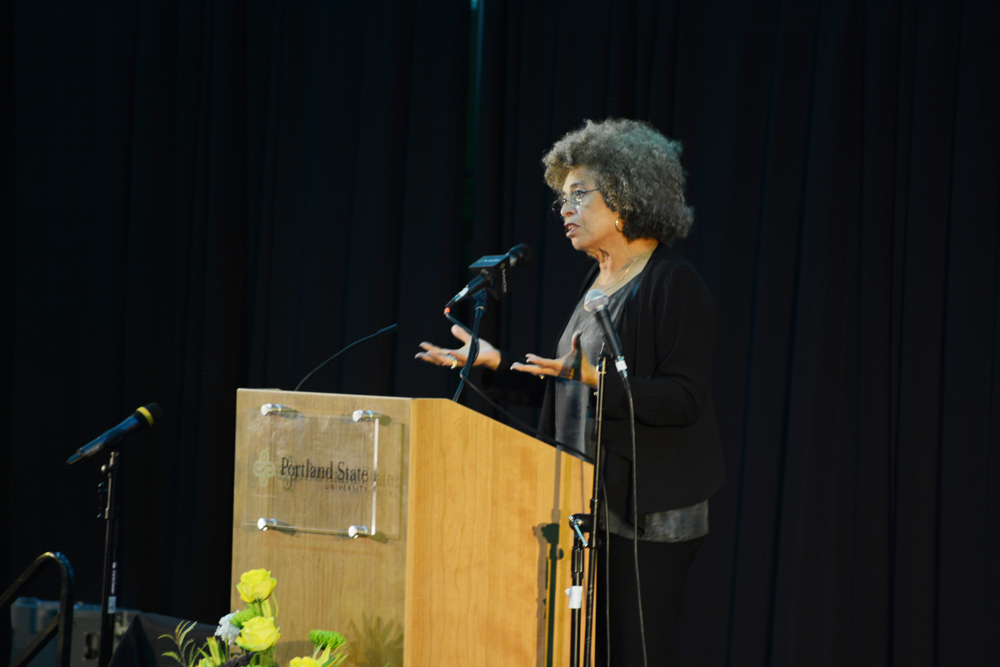Everyday it seems like another national daily newspaper is scaling back circulation, raising prices or cutting staff. This, for the most part, has been seen as the beginning of the end for print news. But it doesn’t need to be. Most of the newspapers making these changes, which are seemingly in effect to ultimately maximize profits, do not understand the actual cost.
On that point
Everyday it seems like another national daily newspaper is scaling back circulation, raising prices or cutting staff. This, for the most part, has been seen as the beginning of the end for print news.
But it doesn’t need to be. Most of the newspapers making these changes, which are seemingly in effect to ultimately maximize profits, do not understand the actual cost.
One paper I will use as an example, because I like to rag on it so much, is The Oregonian. Due to “a steep decline in advertising revenue,” The Oregonian, along with buying out 100 of its employees in August, has recently raised the price of the daily street edition from 50 to 75 cents. A 50 percent increase in a struggling economy. Do they really expect more readership with the increased price?
It has been clear–based on the paper’s headlines and what is chosen as front-page news–that it really is just about selling papers. What is going to happen after the full effect of laying off 100 employees sets in, and The O still has all that space to fill?
Journalists are going to be rushed to fill space and the quality is going to decrease, which in turn is going to hurt their sales. It’s a lose-lose situation. It means people are out of jobs and there is an unreadable daily at an excessive price with no one actually buying it.
But The Oregonian isn’t the only one. The Christian Science Monitor is going to scale back production next April, from a daily to a weekly, much like the Portland Tribune did earlier this year. (Though the Trib only came out twice weekly before the change).
What is odd about the Monitor is that, according to a Business Week article, “It’s protected from the rigors of the market, thanks to its Christian Science benefactor.”
While that would seem to be nice cushion for the business, it has hindered the newspaper from “foster[ing] editorial independence.” Yet, even with a benefactor, albeit an opinionated one, newspapers are still floundering.
This hasn’t only been seen on a national daily newspaper level. Even college campuses are facing tough choices about the future of their student newspapers. If a campus is suppose to act like a microcosm of the actual world, than student publications, much like their big brothers, are definitely taking this bitter scaling-back pill.
A lot of student papers, such as The Vanguard, have a “safety net” of students fees that are durable in times of economic crisis. But others, like the University of California at Berkeley’s The Daily Californian, are not meeting their advertising quotas and thus have to scale back production at least a day or two.
So what are the reasons? Sure, the consolidation of the media industry is one–with eight monolith corporations now controlling the majority of the news media. On top of this is the rise of the Internet (the space is infinite for advertisers and content, ya know).
But it is also something internal. In the past decade in particular, we have seen daily newspapers stop being that “watchdog of our government,” that “benevolent source of information,” and start being bottom-line seekers.
They have stopped qualifying news and their “product” and started quantifying it. The romance of print journalism is still there, including nostalgia for times past, but the integrity is diminishing with every layoff and press-release-inserted-over-actual-news piece.
Our news shouldn’t be a for-profit endeavor.
With that said, much of the news is going online. In some instances, publications, like The Portland Mercury, are only staying afloat by producing a maneuverable online edition. A variety of voices and perspectives is key to seeking the truth (hopefully what all news publications have as their top priority) so we can take online editions as a consolation.
Nothing can fill the shoes of a print edition of the Sunday New York Times, the smell of the ink, the weight of it on the breakfast table, the information right in your hand. Perhaps I am just lamenting a grievous loss at this point, but there is something to be said for having the hard copy of a life-changing event (Sept. 11, 2001?) to reference, to analyze, to understand.
It’s not just knowing what happened that day, or any day, but having proof of humanity’s pursuit of knowledge.
And I cannot get that type of satisfaction by looking at a computer screen.




